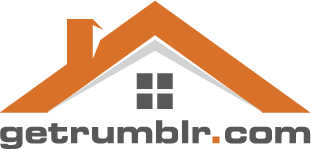4 Major Challenges in the HVAC Trade
Over the years, the heating and air conditioning service industry has revolutionized building construction and design. And in turn, the evolutions and innovation in electronics technologies have reshaped the way HVAC systems are built, installed, operated, and maintained. By standard, we are seeing HVAC systems becoming more compact and naturally, more efficient.
In many other industries, producing a brilliant product that will make the lives of the consumers great is the recipe for success; however, that’s not all there it to is. To ultimately acquire customer satisfaction, there is much that needs to be streamlined, including production and back-office operations.
While HVAC business owners specialize in ensuring the comfort of their customers, they are also taking on some problematic business obstacles along the way. In today’s post, we’ll take a look at what these challenges are and how best to address them.
Competition
There are many heating and air conditioning service providers in the local marketplace; that’s fantastic news for customers since they will have more options to choose from. However, this poses a difficulty for business owners since it can be challenging for them to secure a niche.
According to research conducted by IBISWorld, there are no HVAC companies with a preferred market share in the field, as no HVAC operator accounts for over 5 percent of total revenue. Most of these companies are small businesses, with more than 60 percent employing only two to four people. These smaller companies specialize in just one sector of HVAC, not as a whole.
With a high level of competition from the smallest local company to the most prominent national chains, HVAC businesses opt to offer various prices to entice customers; this may not be the best long-term solution. Experts warn against providing the lowest bid to get in the door with potential customers. Delivering quality service that sets your company apart is a way better and smarter approach – no matter what your specialization is. This step ensures that you are building loyalty and trust. This will win you a recommendation from your clients who will refer you to their friends, families, and neighbors.
Costs
Since technology plays a huge part in delivering optimal heating and air conditioning service, HVAC companies need to invest in cutting-edge technology and specialized equipment. All the while setting competitive prices, so they don’t lose their clients to rival companies. Also, companies have various ongoing costs to keep their business operating. Aside from the specialized equipment, these costs include:
- Certified technicians
- Service vehicles
- Marketing and advertising
- Insurance
The solution is to balance what you spent with the prices that you set, and always trying to lessen costs and doing best practices for the company. Furthermore, we all know that time is money. Investing in efficient HVAC technologies and innovations will correspond to fewer failures and malfunctions, less wasted money, and more developments.
Communication
With any relationship, communication is key. In the HVAC business operations, every personnel – from the service technicians to sales and customer representatives to the accounting staff – must be updated on any upgrades and changes concerning the responsibilities of the other teams within the company. We advise you conduct coaching sessions a few times a month letting each team member understand their fellow employees’ duties. Also, an easy-to-implement communication method will be beneficial.
Aside from the investment in the communications development of your staff, it’s also crucial to speed up the reporting process between the staff and the customers. The flow of data and information – both internally and externally – should be as centralized and streamlined as possible.
Customers
With impatience comes unhappiness. Thus, HVAC contractors always have to do their best work as fast as they can to keep the customers happy. Unfortunately, niceness could be hard to come by when people have malfunctioning or broken appliances. Contractors can reduce customer dissatisfaction even before an issue arises by investing in the right preventive maintenance: changing the filters, scheduling seasoning cleaning, checking each component are some of the practical steps.
High Demand
The good news is according to the Bureau of Labor Statistics, the demand for heating and air conditioning service mechanics and installers is steadily going to increase by 14 percent between 2014 and 2025, and this demand is much faster compared to any other service industries. So even though there are challenges along the way, as long as HVAC business owners take a careful and strategic approach to overcome these difficulties, they will enjoy advancements and opportunities in the years ahead.



